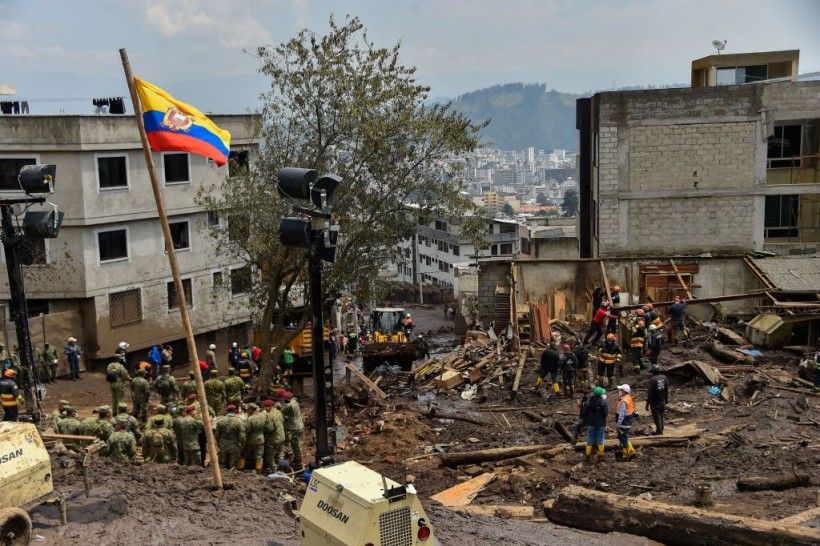Heavy rain and flooding led to another massive landslide in Ecuador on Sunday afternoon, March 27.
Several casualties were reported in Azuay Province where dozens of houses were destroyed in the community of Sayausi in Cuenca Canton.
Renewed Natural Disaster

The local government stated 10 houses were destroyed and 27 others were damaged, leaving 14 people homeless.
Furthermore, the authorities recorded the disaster killed at least four people and injured five others as of Monday, March 28, as per Floodlist.com, a natural disaster news site.
The rockslide in the small Ecuadorian commune also caused widespread disruption to road traffic and blockage of an important communication route along the Cuenca-Molleturo Road.
The loss of drinking water supplies also affected around 250,000 people.
Under such circumstances, it is likely that power outages, satellite signals, and access to the area will remain to be a challenge in the coming days and weeks.
As several people are still trapped under fallen debris and rubbles, a large-scale search and rescue operation is underway, consisting of various emergency services and response groups, including the civil defense, fire service, police, volunteers, municipal workers, and the Red Cross.
The incident came almost two months after a major landslip, triggered by prolonged heavy rainfall, that killed at least 24 people and injured almost 50 others in Ecuador's capital city of Quito in early February, according to The Washington Post.
Also Read: Massive Landslide Kills Multiple People in La Libertad, Peru: Several Others Missing
Government Measures
Dozens of families have been evacuated, and the Ecuadorian government established the provincial Emergency Operations Committee (COE) from 2:00 p.m. ECT (local time) on Tuesday, March 29, as per the local media outlet El Universo.
Ecuador's Vice President Alfredo Borrero arrived in the area to further assess the situation.
Some of the survivors of the mudslide were also left with no food and electricity, with business establishments served as shelters to accommodate them.
The Ministry of Transport and Public Works reportedly announced the arrival of some government officials in preparing a report that would allow the declaration of a state of emergency in the area, as cited by El Universo.
Under the state of emergency, areas affected by the government measure will be prioritized through the channeling of funds for recovery.
In addition, it will also allow local authorities and emergency services to tighten measures.
Climate and Weather
Ecuador's climate and weather are dictated by its only two seasons.
However, the impact and intensity of severe weather conditions, including rain and flooding, can range from moderate to high. This is also evident due to the mountainous regions and some low-lying areas in the country.
Ecuador is currently in its wet season spanning from October to May each year, as per the Ecuador & Galapagos Insiders.
In April, rainfall can last for 24 hours in the country.
In the case of the Azuay Province rockfall on Sunday, the downpour of rain was substantial for a short period of time.
Meanwhile, the dry season occurs from June to September. Warm to extreme temperatures occur during this season, which can reach up to 68 degrees Celsius.
Related Article: 22 Dead, 47 Injured as Landslide, Flooding Impacted Ecuador After Heavy Rainfall
© 2024 NatureWorldNews.com All rights reserved. Do not reproduce without permission.





